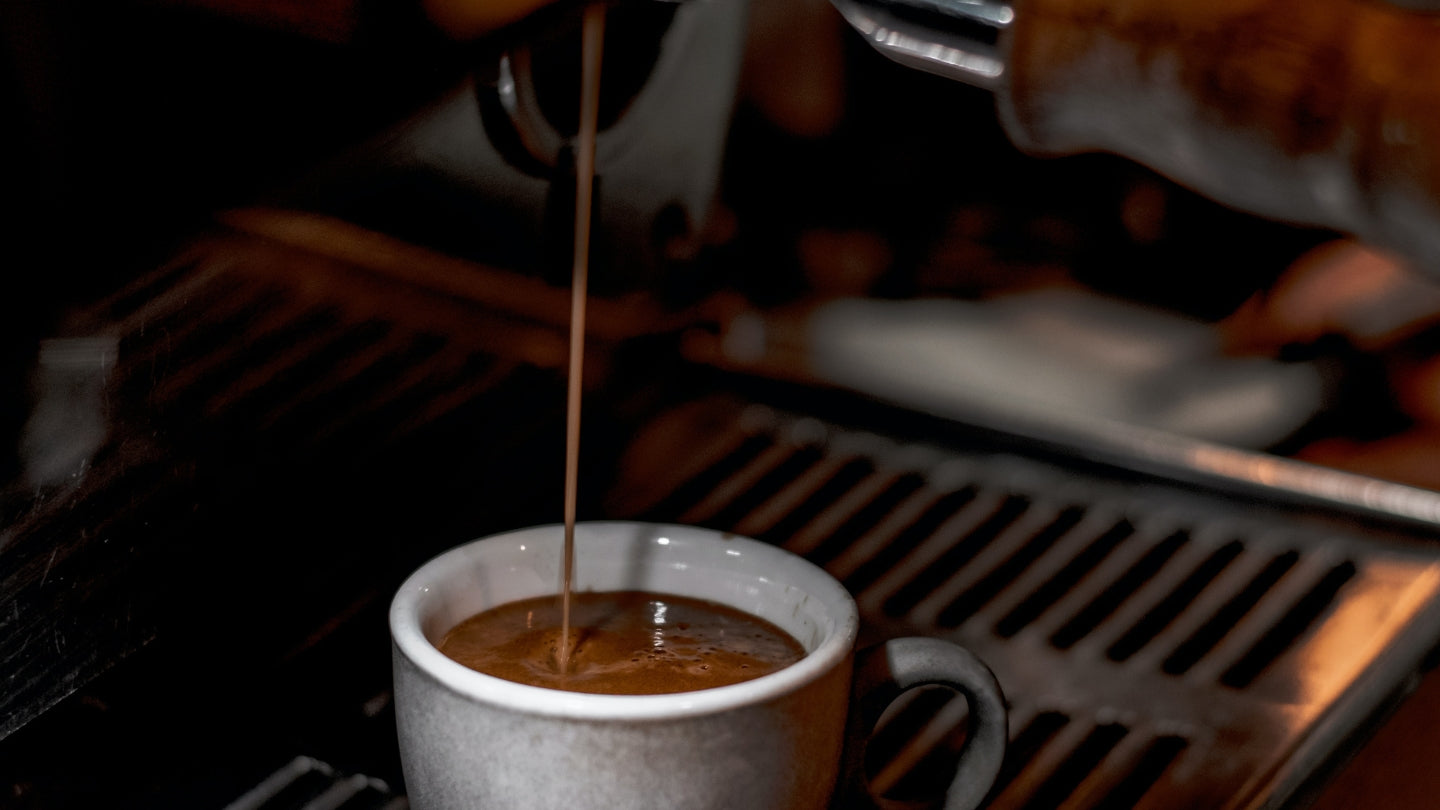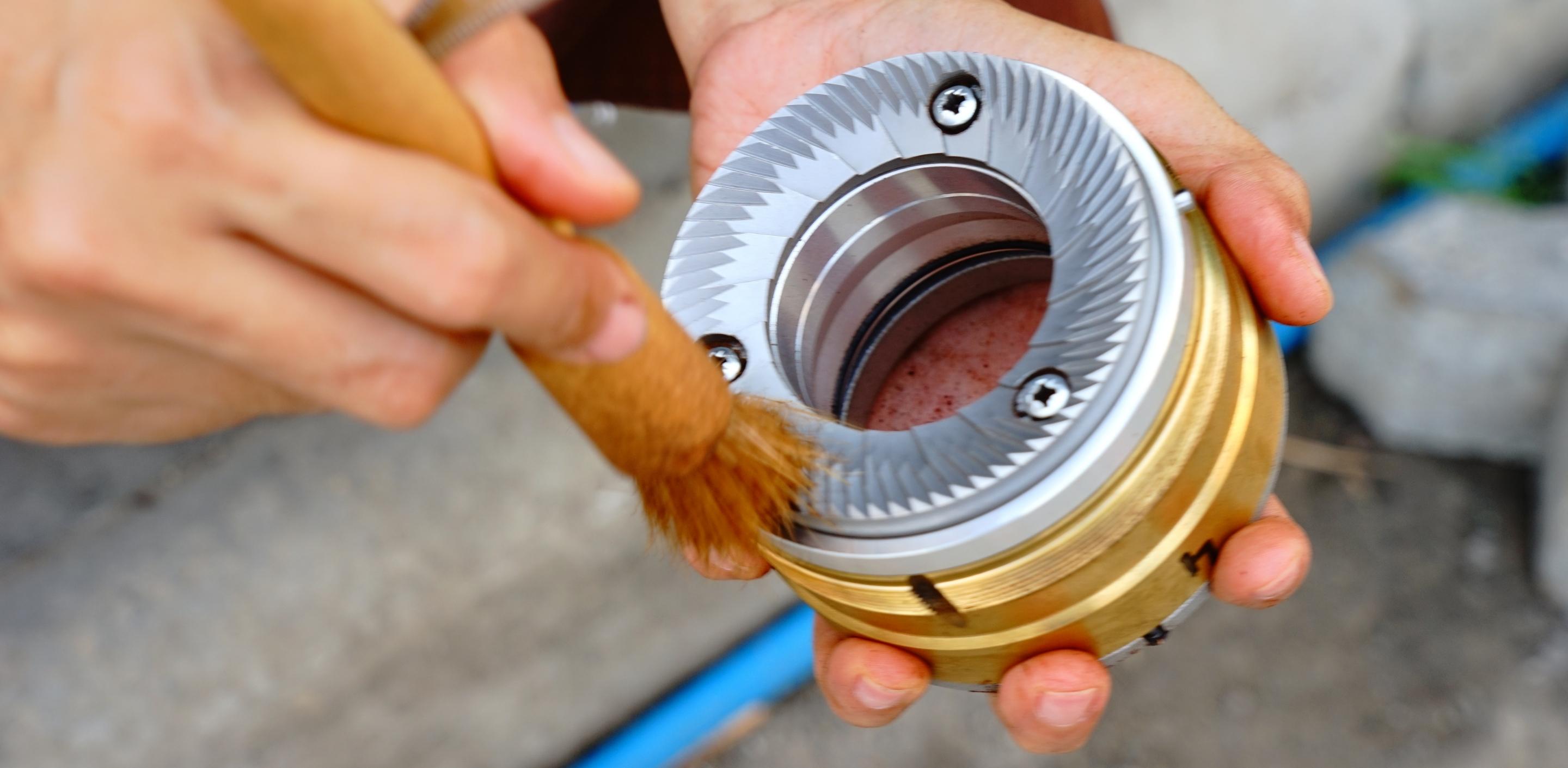Pour Over Brew Guide

Equipment:
-
Hario V60. We recommend a plastic V60 due to plastic’s low heat conductivity and high insulation properties. Either a 1 or 2 cup size will work with this recipe.
-
Vessel. A cup, mug or jug - whatever you wish to brew your coffee into.
-
Hario paper filter. Use the size appropriate for your apparatus.
- Gooseneck kettle. A gooseneck kettle is excellent for ensuring a controlled pour. Choose one with a good ability to retain heat, and/or a thermometer.
- Scales. These will need to be large enough to fit the decanter into which you are brewing.
Ingredients:
- Ground coffee. 20g of medium-fine ground filter-roast coffee
- Filtered or spring water. 300g of water at 96-97 degrees Celsius, plus an additional 50g for rinsing the paper filter.
Method:
- Place the paper filter into the V60, folding the seam flat. Place the V60 onto your decanter, and the decanter on the scales.
- Wet the filter paper all over with hot water to rinse it and warm the V60 apparatus, then dispose of the water.
- Place your ground coffee into the bottom of the V60, gently shaking or tapping the apparatus to settle the coffee. Tare the scales.
- Pour approx. 40g of water into the V60 to wet the coffee and cause it to start bubbling slightly. Wait 30-40 seconds. This is known as the Bloom phase.
- Pour another ~140g of water (total weight should now be 180g) into the V60, in such a way that you churn the coffee grounds slightly with the force of the pour.
- As the water gradually drains through the coffee into the decanter, continue to top it up about 20g of water at a time until a total of 300g of water is in the V60.
- Once you have poured all of the water, swirl the slurry in the V60. If done correctly, the V60 will drain evenly, leaving a flat bed of spent coffee in the filter. This is known as the drawdown phase.
- Your V60 pour over is now ready to drink, though you might wish to let it cool a little first.
Would you like to know more?
So you’ve made some coffee in a V60 pour over, but you weren’t overly enthused about the result. It happens. Here’s a bunch of stuff you can try if you want to really knock it out of the park. Bear in mind that not every item on this list will be to your preference, but they’re worth experimenting with nonetheless!
Let your coffee cool.
Humans aren’t the greatest at discerning flavours in food at extremely high or low temperatures. Immediately after it has been brewed, pour over coffee may be too hot to accurately experience its sensory potential. Try tasting and smelling your coffee periodically as it cools and notice the differences as the temperature changes.
Use better water.
We can’t stress this enough. The water you use to brew makes a huge difference to the taste of your coffee - not surprising given that it makes up a far greater proportion of the final brew than the coffee solubles. A well-made V60 pour over will be about 98-99% water.
Our hometown's water is naturally very hard (high in calcium carbonates and magnesium), and doesn't lend itself to making great coffee straight from the tap. While filtered water is a good solution as it removes a good portion of the undesirable compounds in water, it doesn’t necessarily constitute the best option for coffee brewing. Pure water is generally touted as being too scarce in minerals to properly extract the soluble flavour compounds, though your mileage may vary - some roasters and coffee aficionados recommend and prefer it.
To really highlight the natural flavours in a filter roast single origin coffee, you may wish to make your own water. You can do this by getting some distilled or demineralised water and then mixing in a mineral package designed specifically for providing the right chemical balance for making coffee, or by creating your own composition from readily available household products (magnesium salts and baking soda). Many recipes are available online - the key thing to remember is to create a mineral composition that suits your preferences.
Experiment with your brew ratio.
Our recipe above is a 1:15 Brew Ratio, i.e. one part coffee for every 15 parts water, which is regarded as a relative standard in many countries for making a balanced filter coffee. But just because this is the standard doesn’t mean it’s to everyone’s taste.
If your coffee is too strong, try a brew with more water, or simply add some water at the end. If it’s too weak, use less water. Essentially you’ll be playing with a tradeoff between flavour clarity and mouthfeel. The greater the Brew Ratio, the better flavour clarity you’ll get, while with a smaller ratio, the flavour will be more intense and difficult to discern, but the mouthfeel will be thicker and more viscous.
Experiment with stirring and swirling.
Change up your pouring technique.
Experiment with pouring smaller or larger amounts of water at a time. You might find that 3 pours over the course of the brew gives you the flavour you desire rather than 4 or 5 pours. The less water you pour at a time, the more stable the temperature of your slurry will stay.
Note also that pouring in such a way that you churn or agitate the slurry can be beneficial to the extraction process.
Measure the temperature of your slurry.
Heat is lost :
- Between the water leaving the kettle and hitting the surface of the coffee grounds (~3 to 4 degrees)
- Into the material of the V60 itself (Several degrees in glass and ceramic, much less in plastic)
- Through the open top of the apparatus (The larger the V60, the faster it cools as it has more surface area)
Measuring the temperature in your slurry will give you insight as to how stable your brewing temperature is; important if you want to replicate your results.
If you wish to improve the temperature consistency, here’s what you can do:
- Use a plastic V60, or if you have a glass or ceramic one, thoroughly preheat it.
- Keep the volume of water in your V60 continually topped up a little bit at a time, ensuring that the thermal mass stays high.
- Put more water into your kettle than you actually need. The larger volume of water will help maintain the temperature for longer. A kettle that maintains the water’s temperature while it is at rest, such as a Fellow or Brewista kettle designed for this purpose, is a great investment.




